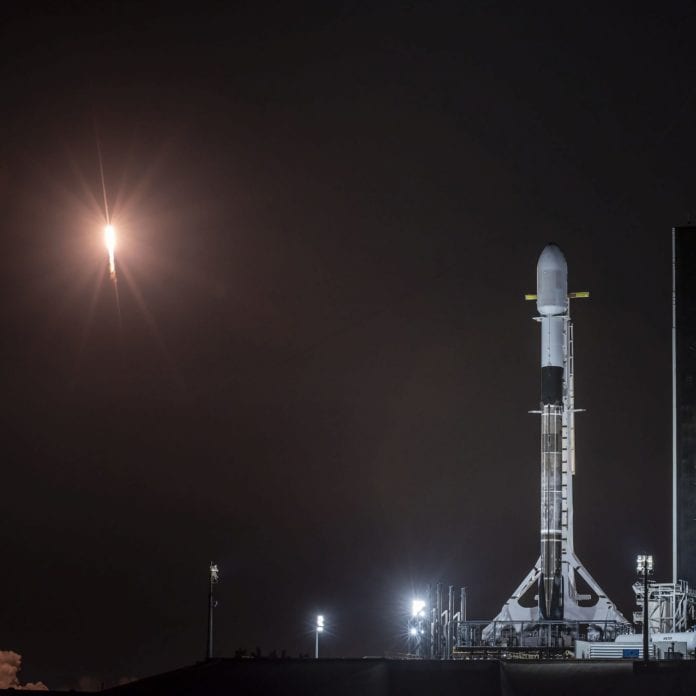Will Starlink’s low-earth-orbit-based satellite broadband service actually be comparable to, or better than, terrestrial broadband? The company won nearly $900 million in funds from the federal government based on the promise that it will be. Now, Speedtest data from Ookla offers a first glimpse of the user experience that Starlink is delivering.
Starlink is still in its beta phase, but Ookla was able to use Speedtest data from the first quarter of this year to look at the service’s performance in the U.S. and Canada. What it found was a mixed bag: Yes, Starlink can meet FCC minimum requirements for broadband, currently defined as speeds of 25 Mbps in the downlink and 3 Mbps in the uplink. In some cases, it can do much, much better than the minimum. (Note: Starlink won $886 million in federal funds to provide service of 100 Mbps downstream and 20 Mbps upstream in 35 states.) But latency is a problem.
In February of this year, Starlink hit the milestone of having more than 1,000 satellites in orbit, which the company said surpassed the size necessary to provide uninterrupted service to “much of” the U.S. “Starlink’s performance is not theoretical or experimental,” the company declared at the time. “Over 10,000 users in the United States and abroad are using the service today.” It says it has already demonstrated that it can surpass the FCC’s highest-tier RDOF metrics of 100/20 Mbps for speed and round-trip network latency of 31 ms or less, and that its “performance is rapidly accelerating in real time as part of its public beta program.”
What Ookla found based on its Speedtest data is that variations in service are significant. Median download speeds from Starlink in the U.S. ranged from 40.36 Mbps in Columbia County, Oregon to 93.09 Mbps in Shasta County, California (Starlink tells beta users to expect speeds between 50-150 Mbps and latency between 20-40 milliseconds). In some cases, Starlink service provided a stunning improved over competing fixed broadband providers in the area — Ookla pointed to the example of Tehama County, CA, where Starlink service was 545.6% faster than the available terrestrial service. But in other places, it was slower than fixed broadband providers, recording speeds nearly 70% slower than others available in Clay County, Missouri.
Ookla did conclude that in both the U.S. and Canada, Starlink “provided competitive or better service at the minimum (25/3/100) tier,” with nearly 87% of U.S. Starlink users meeting that threshold, compared to around 83% of users on all other fixed broadband providers. The 25/3 minimum doesn’t technically apply to Canadian users, but Ookla still used it as a cross-border comparison metric: Almost 86% of Starlink’s Canadian customers met that threshold, versus about 78% for all other providers.
“Given this data, it’s safe to say Starlink could be a cost-effective solution that dramatically improves rural broadband access without having to lay thousands of miles of fiber,” Ookla said. That would assume the 25/3 metric for service, which again, Starlink has promised to substantially improve upon for its RDOF work.
Starlink didn’t fare quite so well on the metric of latency, however, which is an important one for a smooth and responsive user experience. “What we’re seeing so far … is that Starlink’s latency is higher than the alternatives, often much higher,” Ookla said.
Ookla found that Starlink’s latency was higher than all other fixed providers in all but one of the U.S. counties from which data was collected during the first quarter of 2021, with median latencies between 31 ms-88 milliseconds and up to 486% higher than other providers’ latencies, depending on location. The sole exception was in Mariposa County, CA, where Starlink recorded network latency that was more than 17% lower than all other providers combined. Comparatively, the median latency for all other fixed providers in the same areas as Starlink service ranged from 8 ms to 47 ms.
Starlink latency in Canada was also higher than fixed providers across the board, in a range from 209.1% to 369.2% higher.
Starlink’s parent company, SpaceX, has already been taking steps to address the latency issue. Last week, the company was granted permission by the FCC to fly its low-earth-orbit Starlink satellites at a reduced altitude, essentially cutting in half the distance at which those satellites would operate, compared to its previous plans. SpaceX told the FCC that the change would help it reduce its latency and improve customer experience. Whether, and to what extent, that change impacts service will be a factor to look for in future testing.
“[Elon] Musk’s Starlink experiment is certainly fascinating and we applaud any effort to get better service for rural residents,” Ookla’s Isla McKetta wrote. “That said, it’s clearly early days for Starlink. We’ll be watching to see how performance improves as more satellites are launched and as more users join the service.”

